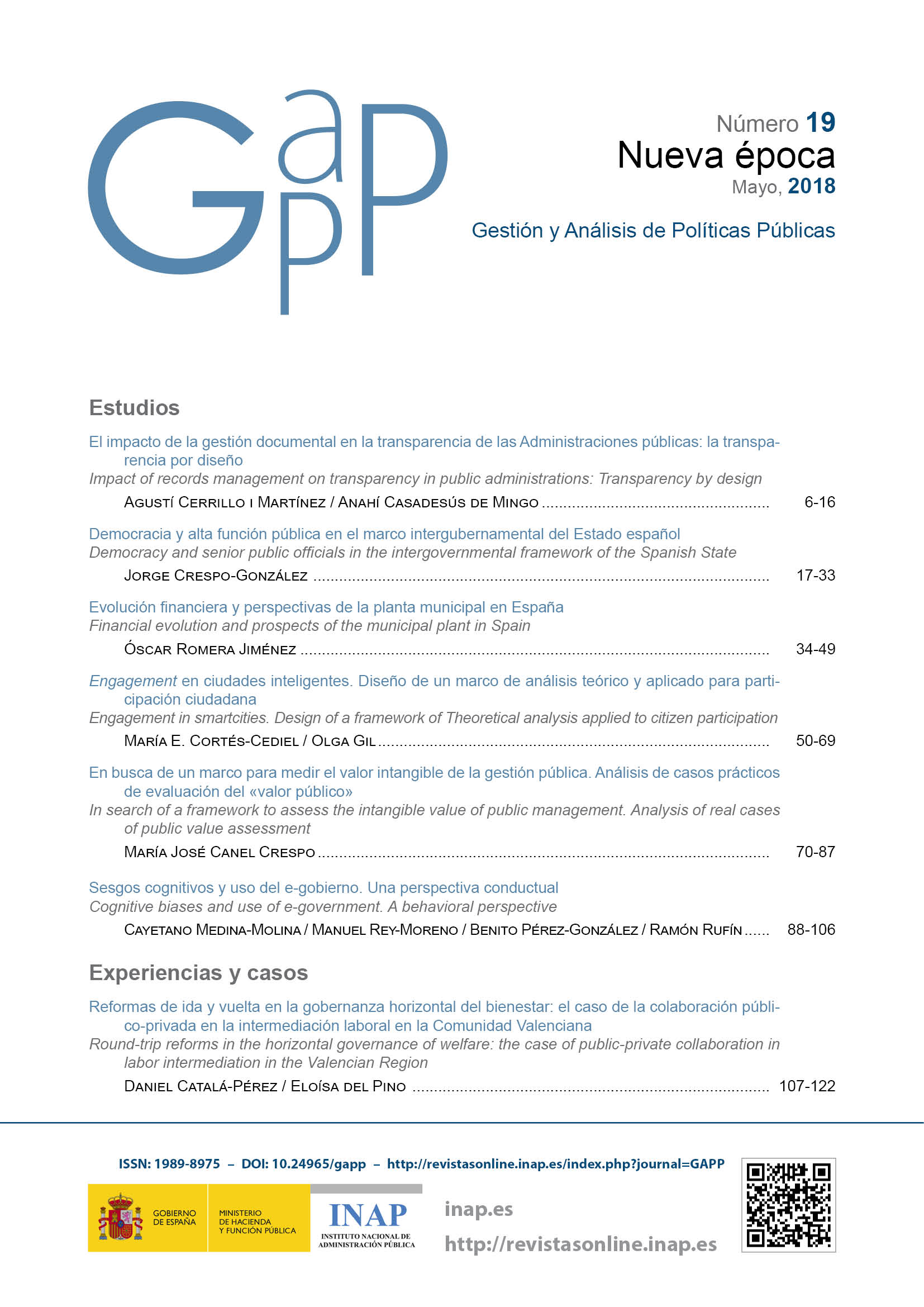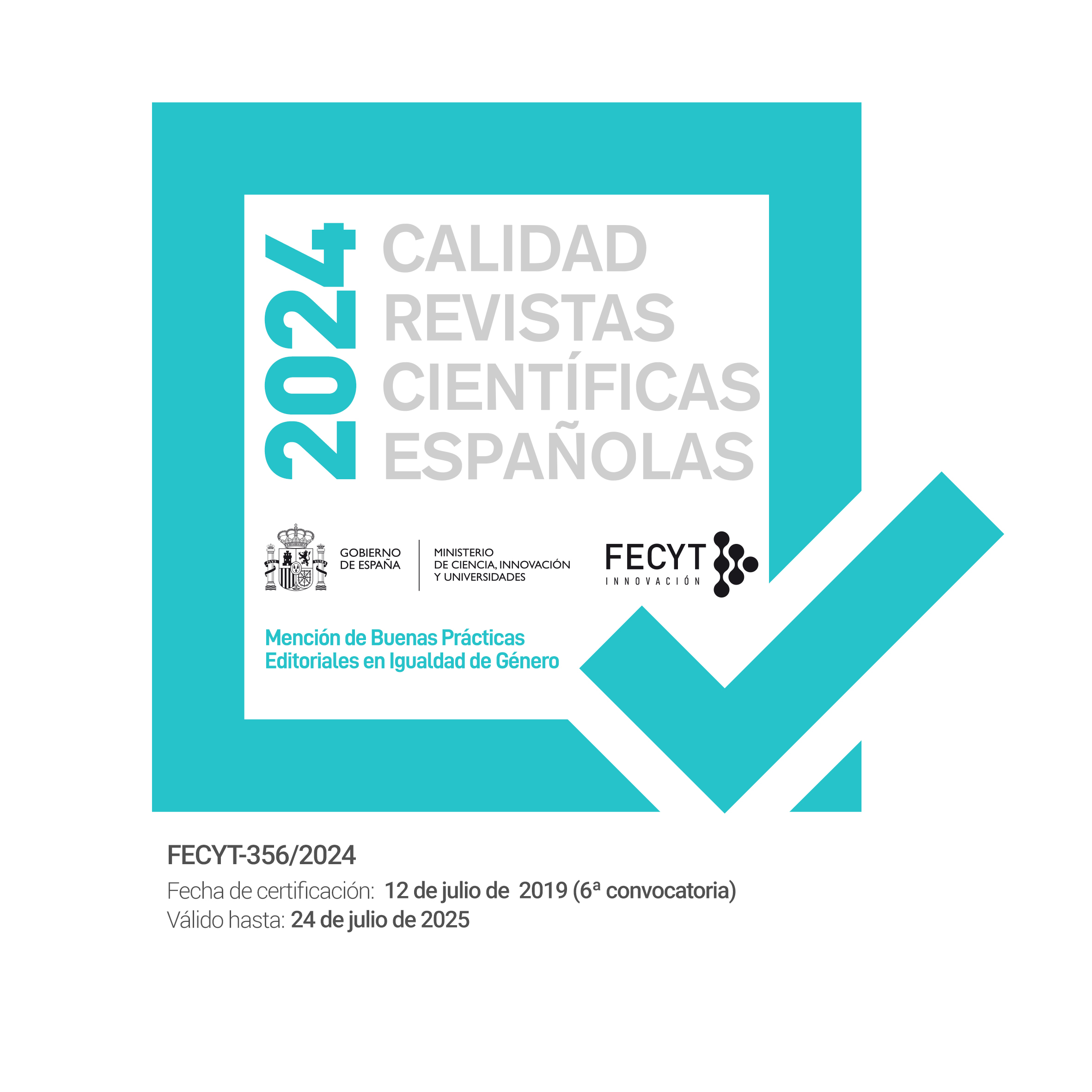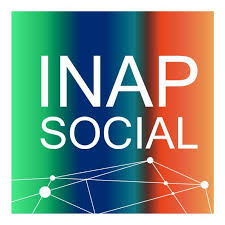Cognitive biases and use of e-government. A behavioral perspective
DOI:
https://doi.org/10.24965/gapp.v0i19.10450Keywords:
Behavioural public administration, e-government, habit, inertia, resistanceAbstract
E-government is conceived as a tool to improve efficiency and effectiveness in the provision of public services. However, in spite of the efforts to achieve a widespread adoption of e-government, it has lower usage rates than expected. Although this fact has been studied from different viewpoints, in the present work the behavioral perspective is presented as an approach that may answer to this challenge. To get it, the relationship between different cognitive biases linked to the SQB (habit, inertia and resistance) with the intention (of use for users and continuation for users) is analyzed. The data were collected after a qualitative (two group sessions) and a quantitative work (923 questionnaires), aimed at two different samples of citizens (non-users and users of e-government). The results confirm the presence of the trend towards the status quo in the use of e-government. Besides, while in the case of non-users of e-government the cognitive biases analyzed are present, leading to delay its use, among the users of e-government habit lacks relevance, so they remain in use as a channel of access to public services.
Downloads
References
AGENCIA DE EVALUACIÓN Y CALIDAD (AEVAL). (2016). Estabilidad y mejora en los servicios públicos. Ministerio de Hacienda y Administración Pública.
ANDERSON, C. J. (2003), “The Psychology of Doing Nothing: Forms of Decision Avoidance. Results from Reason and Emotion”, Psychological Bulletin, 129 (1): 139-167. DOI: https/doi.org/10.1037//0033-2909.129.1.139.
ARIELY, D. (2008). Predictably Irrational: The Hidden Forces That Shapes our Decisions. NY: Harper Collins.
BHATTACHERJEE, A. (2001). “Understanding Information Systems Continuance. An Expectation-Confirmation Model”. MIS Quarterly, 25 (3), 351-370. https://doi.org/10.2307/3250921.
BHATTACHERJEE, A. y Hikmet, N. (2007), “Physicians’ resistance toward healthcare information technology: A theoretical model and empirical test”, European Journal of Information Systems, 16: 725-737. https/doi.org/10.1057/palgrave.ejis.3000717.
BHATTACHERJEE, A. y LIN, C.-P. (2015), “A unified model of IT continuance: three complementary perspectives and crossover effects”, European Journal of Information Systems, 23: 364-373. https/dx.doi.org/10.1016/j.emj.2011.11.003.
BHATTACHERJEE, A. y PARK, A. C. (2014), “Why end-users move to the cloud: a migration-theoretic analysis”, European Journal of Information Systems, 23: 357-372. https://doi.org/10.1057/ejis.2013.1.
CASTELNOVO, W. y SORRENTINO, M. (2017), “The digital government imperative: a context-aware perspective”, Public Management Review, article in press. https://doi.org/10.1080/14719037.2017.1305693.
CHOUEIKI, A. (2016), “Behavioral Insights for Better Implementation in Government”, Public Administration Review, 76 (4): 540-541. https://doi.org/10.1111/puar.12594.
DATTA, S. y MULLAINATHAN, S. (2014), “Behavioral design: a new approach to development policy”, Review of Income and Wealth, 60 (1): 7-35. https://doi.org/10.1111/roiw.12093.
DWIVEDI, Y. K., RANA, R. P., JANSSEN, M., LAL, B. WILLIAMS, M. D. y CLEMENT, M. (2017), “An empirical validation of a unified model of electronic government adoption (UMEGA)”, Government Information Quarterly, 34: 211–230. http://dx.doi.org/10.1016/j.giq.2017.03.001.
EBBERS, W. E. y VAN DIJK, J. A. G. M. (2007), “Resistance and support to electronic government, building a model of innovation”, Government Information Quarterly, 24: 554-575. https://doi.org/10.1016/j.giq.2006.09.008.
FALK, T., SCHEPERS, J., HAMMERSCHMIDT, M. y BAUER, H. H. (2007), “Identifying Cross-Channel Dyssinergies for Multichannel Service Providers”, Journal of Service Research, 10 (2): 143-160. https://doi.org/10.1177/1094670507306683.
GRIMMELIKHUIJSEN, S., JILKE, S., OLSEN, A. L. y TUMMERS, L. (2016), “Behavioral Public Administration: Combining Insights from Public Administration and Psychology”, Public Administration Review, 77 (1): 45-56. https://doi.org/10.1111/puar.12609.
GRUNE-YANOFF, T. y HERTWIG, R. (2016), “Nudge Versus Boost: How Coherent are Policy and Theory?”, Minds and Machines, 26 (1-2): 149-183. https://doi.org/10.1007/s11023-015-9367-9.
HAIR, J. F., RINGLE, C. M. y SARSTEDT, M. (2011). PLS-SEM: Indeed a Silver Bullet. Journal of Marketing Theory and Practice, 19 (2), 139-151. https://doi.org/10.2753/mtp1069-6679190202.
HSIEH, P. J. y LIN, W. S. (2017), “Explaining resistance to system usage in the PharmaCloud: A view of the dual-factor model. Information & Management”. Article in press. http://dx.doi.org/10.1016/j.im.2017.03.008.
HSIEH, P.-J. (2016), “An empirical investigation of patients` acceptance and resistance toward the health cloud: the dual factor perspective”, Computers in Human Behavior, 63: 959-969. https://doi.org/10.1016/j.chb.2016.06.029.
JILKE, S., VAN DE WALLE, S. & KIM, S. (2016). Generating Usable Knowledge Through an Experimental Approach to the Public Administration. Public Administration Review, 76 (1), 69-72. https://doi.org/10.1111/puar.12488.
KAHNEMAN, D., KNETSCH, J. L. y THALER, R. H. (1991), “Anomalies: The Endowment Effect, Loss Aversion, and Status Quo Bias”, Journal of Economic Perspectives, 5 (1): 695-707. https://doi.org/10.1257/jep.5.1.193.
KHEDHAOURIA, A., THURIK, R., GURAU, C. y van HECK, E. (2016), “Customers’ Continuance Intention Regarding Mobile Service Providers: A Status Quo Bias Perspective”, Journal of Global Information Management, 24 (4): 1-21. https://doi.org/10.4018/jgim.2016100101.
KIM, H.-W. y GUPTA, S. (2012), “Investigating Customer Resistance to Change in Transaction Relationship with an Internet Vendor”, Psychology & Marketing, 29 (4): 257-269. https://doi.org/10.1002/mar.20519.
KIM, H.-W. y KANKANHALLI, A. (2009), “Investigating User Resistance to Information Systems Implementation: A Status Quo Bias Perspective”, MIS Quarterly, 33 (3): 567-582. https://doi.org/10.2307/249384.
LEE, K. y JOSHI, K. (2016), “Examining the use of status quo bias perspective in IS research: need for re-conceptualizing and incorporating biases”, Information Systems Journal. https://doi.org/10.1111/isj.12118.
LI, Z. y CHENG, Y. (2014), “From free to fee: exploring the antecedents of consumer intention to switch to paid online content”, Journal of Electronic Commerce Research, 15 (4): 281-299.
LIMAYEN, M., HIRTZ, S. G. y CHEUNG, C. M. K. (2007), “How habit limits the predictive power of intention: the case of information systems continuance”, MIS Quarterly, 31 (4): 705-737. https://doi.org/10.2307/3250921.
LUNA-REYES, L. F., HERNÁNDEZ GARCÍA, J. M. y GIL-GARCÍA, J. R. (2009), “Hacia un modelo de los determinantes de éxito de los portales de gobierno estatal en México”, Gestión y política pública, 18 (2): 307-340. Disponible en web: http://www.scielo.org.mx/scielo.php?script=sci_arttext&pid=S1405-10792009000200003.
MAIO, G. R., VERPLANKEN, B., MANSTEAD, A. S., STROEBE, W., ABRAHAM, C., SHEERAN, P. y CONNER, M. (2007), “Social psychological factors in lifestyle change and their relevance to policy”, Social Issues and Policy Review, 1 (1): 99-137. https://doi.org/10.1111/j.1751-2409.2007.00005.x.
MEDINA, C., RUFIN, R. y REY, M. (2013), “La Adopción Del E-Gobierno En Entornos Voluntarios”, Investigaciones Europeas de Dirección y Economía de la Empresa, 19 (1), 42-52. http://dx.doi.org/10.1016/j.iedee.2012.10.001.
MEDINA, C. (2017). Estrategia omnicanal en la distribución de servicios públicos. Madrid: Instituto Nacional de la Administración Pública.
MEDINA-MOLINA, C., REY-MORENO, M. y PÉREZ-GONZÁLEZ, B. (2017), “Estrategia omnicanal para no usuarios del e-gobierno”, GAPP, 18 (noviembre): 94-109. https://doi.org/10.24965/gapp.v0i18.10463.
MORAES, C., CARRIGAN, M. y SZMIGIN, I. (2012), “The coherence of inconsistencies: Attitude–behaviour gaps and new consumption communities”, Journal of Marketing Management, 28 (1-2): 103-128. https://doi.org/10.1080/0267257x.2011.615482.
MOYNIHAN, D. P. y LAVERTU, S. (2012), “Cognitive biases in governing: Technology preferences in election administration”, Public Administration Review, 72 (1): 68-77. https://doi.org/10.1111/j.1540-6210.2011.02478.x.
MUNUERA, M. P. (2016), “Agenda digital: e-Servicios sociales”, Gestión y Análisis de Políticas Públicas, 16 (julio-diciembre): 27-40. https://doi.org/10.24965/gapp.v0i16.10362.
NG, E. H. y KWAHK, K. Y. (2010), “Examining the determinants of Mobile Internet service continuance: A customer relationship development perspective”, International Journal of Mobile Communications, 8 (2): 210-229. https://doi.org/10.1504/ijmc.2010.031448.
NYGREN, K. G., AXELSSON, K. y MELIN, U. (2014), “Multi-Channel Service Management in Public Sector – Three Interpretative Frames Illustrating E-government and Work Practice in a Swedish State Agency”, Electronic Journal of e-Government, 12 (1): 115-128. Disponible en: http://www.ejeg.com/volume12/issue1.
OECD (2015), Behavioural insights and new approaches to policy design. The views from the field. Summary of an international seminar. Paris, 23 January 2015. Disponible en: https://www.oecd.org/gov/behavioural-insights-summary-report-2015.pdf.
OECD (2017), Behavioural Insights and Public Policy: Lessons from Around the World, OECD Publishing, Paris. http://dx.doi.org/10.1787/9789264270480-en.
OLSEN, S. O., TUDORAN, A. A., BRUNSO, K. y VERBEKE, W. (2013), “Extending the prevalent consumer loyalty modelling: the role of habit strength”, European Journal of Marketing, 47 (1-2): 303-323. https://doi.org/10.1108/03090561311285565.
ONTSI (2017). Indicadores destacados de la Sociedad de la Información.
ORTIZ DE GUINEA, A. y MARKUS, M. L. (2009), “Why break the habit of a lifetime? Rethinking the roles of intention, habit, and emotion in continuing information technology use”, MIS Quarterly, 33 (3): 433-444. Disponible en: http://www.misq.org/contents-33-3/.
PATSIOTIS, A., HUGHES, T. y WEBBER, D. J. (2013), “An examination of consumers’ resistance to computer based technologies”, Journal of Service Marketing, 27 (4): 294-312. https://doi.org/10.1108/08876041311330771.
POLITES, G. L. y KARAHANNA, E. (2012), “Shackled to the Status Quo: the inhibiting effects of incumbent system habit, switching costs, and inertia on new system acceptance”, MIS Quarterly, 36 (1): 21-42. Disponible en: http://www.misq.org/contents-36-1/.
PONT, J. (2016), “Modelos innovadores de administración y gestión pública: Hacia la emergencia de nuevos paradigmas”, Gestión y Análisis de Políticas Públicas, 16 (julio-diciembre). https://doi.org/10.24965/gapp.v0i16.10364.
ROLDÁN, J. L. y SÁNCHEZ-FRANCO, M. J. (2012). “Variance-based Structural Equation Modeling: Guidelines for Using Partial Least Squares in Information Systems Research”. En MORA, M. et al. (Eds.) Research Methodologies in Engineering of Software Systems and Information Systems: Philosophies, Methods and Innovations. Hershey, PA: IGI Global. (Chapter II.3).
SAMUELSON, W. y ZECKHAUSER, R. (1988), “Status Quo Bias in Decision Making”, Journal of Risk and Uncertainty, 1: 7-59. https://doi.org/10.1007/bf00055564.
SCHÄFER, M., JAEGER-ERBEN, M. y BAMBERG, S. (2012), “Live Events as Windows of Opportunity for Changing Towards Sustainable Consumption Patterns?”, Journal of Consumer Policy, 35: 65-84. https://doi.org/10.1007/s10603-011-9181-6.
SIMON, H. A. (1955). “A Behavioral Model of Rational Choice”. The Quaterly Journal of Economics, 69: 99-118. https://doi.org/10.2307/1884852.
TAYLOR, S. y TODD, P. (1995), “Understanding information technology usage: A test of competing models”, Information Systems Research, 6 (2): 144-176. https://doi.org/10.1287/isre.6.2.144.
TRIANDIS, H. C. (1980), Values, attitudes, and interpersonal behaviour, 27. Lincoln: Nebraska: University of Nebraska Press.
VAN VEENSTRA, A. y JANSSEN, M. (2010), “Migration Strategies for Multi-Channel Service Provisioning in Public Agencies”, Electronic Journal of e-Government, 8 (2): 215-226. Disponible en: http://www.ejeg.com/volume8/issue2.
VENKATESH, V., THONG, J. Y., CHAN, F. K., HU, P. J. H. y BROWN, S. A. (2011), “Extending the two-stage information systems continuance model: Incorporating UTAUT predictors and the role of context”, Information Systems Journal, 21 (6): 527-555. https://doi.org/10.1111/j.1365-2575.2011.00373.x.
VERPLANKEN, B. y AARTS, H. (1999), “Habit, attitude, and planned behavior: Is habit an empty construct or an interesting case of goal-directed automaticity?”, en STROEBE, W. y HEWSTONE, M. (Eds.), European Review of social psychology, 10 (1): 101-134.
VERPLANKEN, B. y WOOD, W. (2006), “Interventions to Break and Create Consumer Habit”, Journal of Public Policy & Marketing, 25 (1): 90-103. https://doi.org/10.1509/jppm.25.1.90.
VIDAL, C. y DELGADO, D. (2017), “La reforma de las Administraciones Públicas y el Estado Social en la crisis económica (2012-2015)”, Gestión y Análisis de Políticas Públicas, 17 (mayo): 40-62. https://doi.org/10.24965/gapp.v0i17.10400.
WANG, Q., SONG, P. y YANG, X. (2013), “Understanding the substitution effect between online and traditional channels: evidence from product attributes perspectives”, Electronic Markets, 23: 227-239. https://doi.org/10.1007/s12525-012-0114-2.
WANG, R. J. H., MALTHOUSE, E. C. y KRISHNAMURTHI, L. (2015), “On the Go: How Mobile Shopping Affects Customer Purchase Behavior”, Journal of Retailing, 91 (2): 217-234. https://doi.org/10.1016/j.jretai.2015.01.002.
WOOD, W. y NEAL, D. T. (2006), “The habitual consumer”, Journal of Consumer Psychology, 19: 579–592. https://doi.org/10.1016/j.jcps.2009.08.003.












